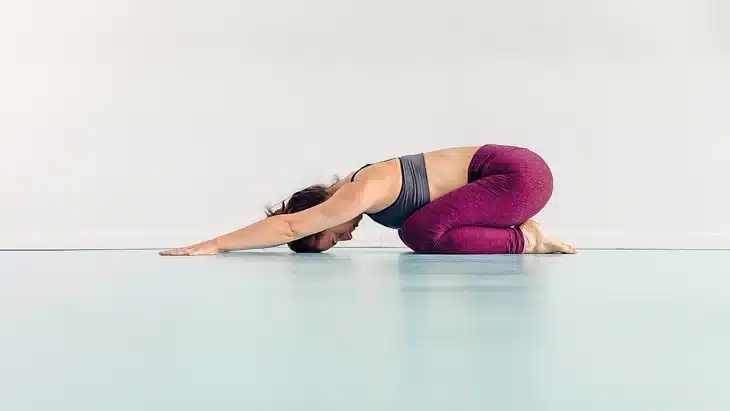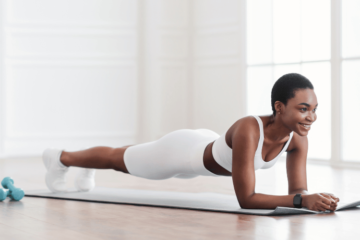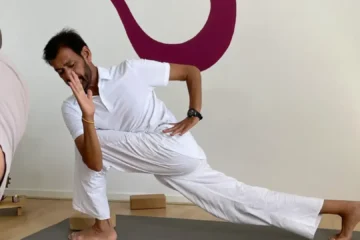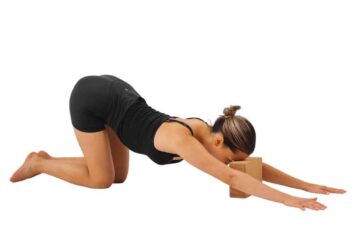In today’s hectic and fast-paced world, tension and stress can accumulate in our bodies, leading to discomfort, stiffness, and fatigue.
Fortunately, yoga offers a gentle and effective way to release tension and promote relaxation through a series of specific poses that target areas of tightness and discomfort.
In this article, we’ll explore a selection of yoga poses designed to unwind the body, release muscular tension, and foster a sense of ease and well-being.
Understanding Tension and Its Effects
Tension is the body’s natural response to stress, whether physical, mental, or emotional. When we experience stress, our muscles tend to contract and tighten as a protective mechanism, leading to feelings of stiffness and discomfort.
Over time, chronic tension can contribute to a range of health issues, including headaches, back pain, and decreased flexibility.
By incorporating yoga poses for tension release into our daily routine, we can counteract the effects of stress and promote greater comfort and relaxation in the body.
Yoga Poses for Tension Release:
- Child’s Pose (Balasana): Child’s Pose is a gentle resting posture that targets the back, hips, and shoulders, releasing tension and promoting relaxation. Begin on hands and knees, sit back on the heels, and extend the arms forward, resting the forehead on the ground. Allow the breath to deepen and soften, inviting a sense of surrender and ease into the body.
- Cat-Cow Stretch (Marjaryasana-Bitilasana): Cat-Cow Stretch is a dynamic movement that helps release tension in the spine, shoulders, and chest. Start on hands and knees, inhale to arch the back and lift the head and tailbone for Cow Pose, then exhale to round the spine and tuck the chin for Cat Pose. Flow between the two poses with the breath, moving mindfully and with awareness.
- Forward Fold (Uttanasana): Forward Fold stretches the entire back of the body, including the spine, hamstrings, and calves, releasing tension and promoting relaxation. Stand with feet hip-width apart, hinge at the hips, and fold forward, letting the torso hang over the legs. Bend the knees as needed to maintain comfort and allow the upper body to relax fully.
- Supine Twist (Supta Matsyendrasana): Supine Twist stretches the spine, hips, and shoulders, releasing tension and promoting spinal mobility. Lie on your back with knees bent, extend arms out to the sides in a T shape, then gently lower both knees to one side while keeping the shoulders grounded. Hold the twist for several breaths, then switch sides.
- Legs-Up-the-Wall Pose (Viparita Karani): Legs-Up-the-Wall Pose is a deeply restorative posture that promotes circulation, releases tension in the legs and lower back, and calms the nervous system. Lie on your back with hips close to a wall, extend legs up the wall, and relax the arms by your sides. Close the eyes and breathe deeply into the belly, allowing tension to melt away with each exhale.
Breath Awareness and Mindfulness
As you move through these yoga poses for tension release, pay attention to your breath and cultivate mindfulness by observing sensations in the body without judgment.
Deep, slow breaths can help calm the nervous system and deepen the relaxation response, enhancing the effectiveness of the poses.
Incorporating Tension-Release Yoga Poses into Your Routine
To experience the full benefits of these yoga poses for tension release, aim to incorporate them into your daily routine, especially during times of heightened stress or tension.
Dedicate a few minutes each day to stretch and release tension, either as a standalone practice or as part of a larger yoga session.
Conclusion
Yoga poses for tension release offer a gentle and effective way to unwind the body, release muscular tension, and foster a sense of ease and well-being.
By incorporating these poses into your daily routine, you can counteract the effects of stress, improve flexibility, and promote relaxation in both body and mind.
Embrace yoga as a sacred practice of self-care and rejuvenation, allowing it to serve as a sanctuary of calmness and relief amidst the busyness of everyday life.




